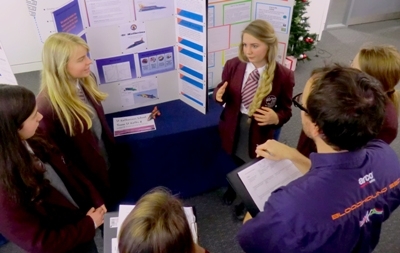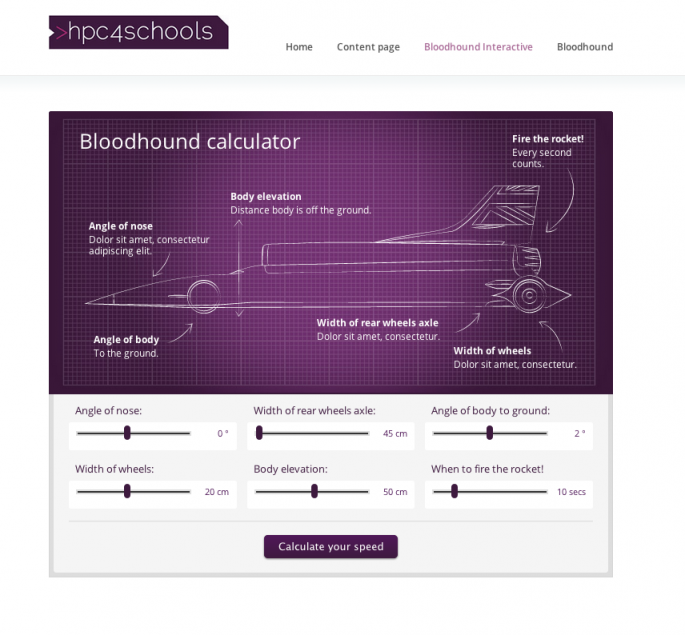
High performance computing brings cutting-edge eLearning to Bristol schools
200 secondary school pupils will find out today [Wednesday 27 November] if their team has designed the fastest virtual land speed racer.
For the past three months, 11 to 14-year-old pupils from 12 local schools have been taking part in SPEED: Beat the Bloodhound. The team-based competition, led by David Standingford and Jamil Appa from Zenotech Ltd, is part of a pilot education programme funded by a Royal Academy of Engineering Ingenious grant for public engagement.
SPEED challenged key stage 3 students to design and race a virtual supersonic car using state-of-the-art web-based software. Simulations were run on the University of Bristol’s advanced Blue Crystal supercomputer, which has the computing power of thousands of home PC’s, to calculate each designs maximum speed. Teams then had the opportunity to study the run data, exactly like Bloodhound’s engineers, and improve their design before racing again. Over 7,000 simulations have been completed using the online platform.

Finding the right aerodynamic shape for a 1,000 mph car is an immense challenge, one that took Bloodhound’s aerodynamicists over 30 years of design time using the same state-of-art computational fluid dynamics software and one of the world’s biggest computing clusters to mathematically map the airflow over the car.
Simon McIntosh-Smith, Head of the Microelectronics Group and Senior Lecturer in High Performance Computing and Architectures at the University of Bristol, said “This is a fantastic and rare opportunity for school children to use Blue Crystal, one of the fastest supercomputers in the world costing millions of pounds.
“With it they can compete with their friends and with teams from across the country, trying to come up with the fastest possible Bloodhound 1,000mph car design, by using the power of high performance computing and computer-based simulation, the same kinds of techniques used by Formula 1 teams to design race-winning cars.”
The schools have been supported by STEMNET Ambassadors - real-life scientists and engineers who have helped develop the team’s ideas. The cars have been designed as part of the students' maths and science lessons, and during after-school science clubs.
Pupils had one million different design permutations available to them using the basic Bloodhound SSC shape. By varying the ride height, angle of the nose and width of the wheels they changed how aerodynamic the car would be.
The winners will be announced by former World Land Speed Record holder and Bloodhound Project Director Richard Noble and the SPEED competition organisers at a prize-giving event at the science learning centre, At-Bristol on Wednesday 27 November.
The SPEED project is led by Bristol-based Zenotech with support from the University of Bristol, Royal Academy of Engineering, At-Bristol, STEMNET Ambassadors, GraphicScience and Mentor Digital.
Upon completion of the successful pilot, the Bloodhound Education Programme will work with the Speed team to help roll this exciting eLearning programme out nationally, as part of Bloodhound’s on going work on a Department for Education programme with 250 schools. The Education Programme will be running Bloodhound STEM and computer science workshops in over the 2014/2015 period. Bloodhound will be helping the Speed team find the required sponsors to fund the national roll out of the Speed programme as part of this growing partnership in UK education.

